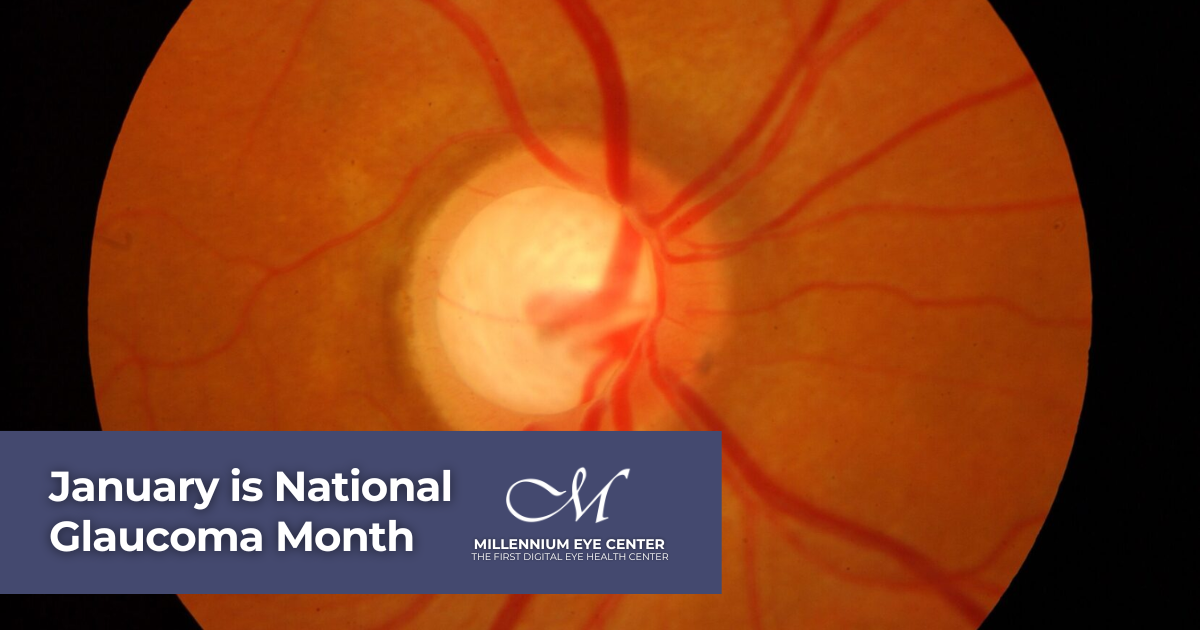January is the National Glaucoma Awareness Month. Close to three million people actually have glaucoma, but half of them do not realize it because there are often no warning symptoms.
Glaucoma is the second leading cause of blindness in the United States of America and the first major leading cause of preventable blindness. Approximately 120,000 Americans are mostly blind because they suffer from glaucoma, accounting for 9% to 12% of all cases of blindness in the United States of America. Glaucoma is the leading cause of blindness among the Blacks/African-Americans. It is 6 to 8 times more common in African-Americans than the Caucasians. The most common form is the Open Angle Glaucoma which accounts for 19% of all blindness among African-Americans compared to the 6% in Caucasians.
What is Glaucoma?
Glaucoma is a disease that damages your eye’s optic nerve. It usually happens when fluid builds up and increases eye pressure. The term “glaucoma” refers to a group of disorders that damage the ocular nerve, leading to vision loss and blindness. Glaucoma is most commonly caused by ocular hypertension, or high pressure inside of the eye.
Typically, There Are No Early Warning Signs
What makes glaucoma so frightening is that it often becomes a sudden problem. Most people don’t notice any of the warning signs or symptoms; however, with annual eye exams we can check the pressure of your eye and monitor your risk.
Types of glaucoma
There are two major types of glaucoma…
Primary open-angle glaucoma
This is the most common type of glaucoma. It happens gradually, where the eye does not drain fluid as well as it should (like a clogged drain). As a result, eye pressure builds and starts to damage the optic nerve. This type of glaucoma is painless and causes no vision changes at first. Some people can have optic nerves that are sensitive to normal eye pressure. This means their risk of getting glaucoma is higher than normal. Regular eye exams are important to find early signs of damage to their optic nerve.
Angle-closure glaucoma (also called “closed-angle glaucoma” or “narrow-angle glaucoma”)
This type happens when someone’s iris is very close to the drainage angle in their eye. The iris can end up blocking the drainage angle. You can think of it like a piece of paper sliding over a sink drain. When the drainage angle gets completely blocked, eye pressure rises very quickly. This is called an acute attack. It is a true eye emergency, and you should call your ophthalmologist right away or you might go blind. Here are the signs of an acute angle-closure glaucoma attack:
- Your vision is suddenly blurry
- You have severe eye pain
- You have a headache
- You feel sick to your stomach (nausea)
- You throw up (vomit)
- You see rainbow-colored rings or halos around lights
Early Diagnosis Is Crucial for Saving Eyesight
Right now, there is no way to reverse the damage glaucoma does to the optic nerve. That may change in the future, but modern treatments can slow down the disease’s progression, particularly in the early stages. You can protect your eyesight by learning about your personal risk factors and keeping up with your annual eye exams!
Our highest priority is our patients’ healthy eyesight! To schedule an appointment, click HERE or text us at 407-292-9812.
Disclaimer: The content on this blog is not intended to be a substitute for professional medical advice, diagnosis, or treatment. Always seek the advice of qualified health providers with questions you may have regarding medical conditions. Top image used under CC0 Public Domain license. Image cropped and modified from original.

